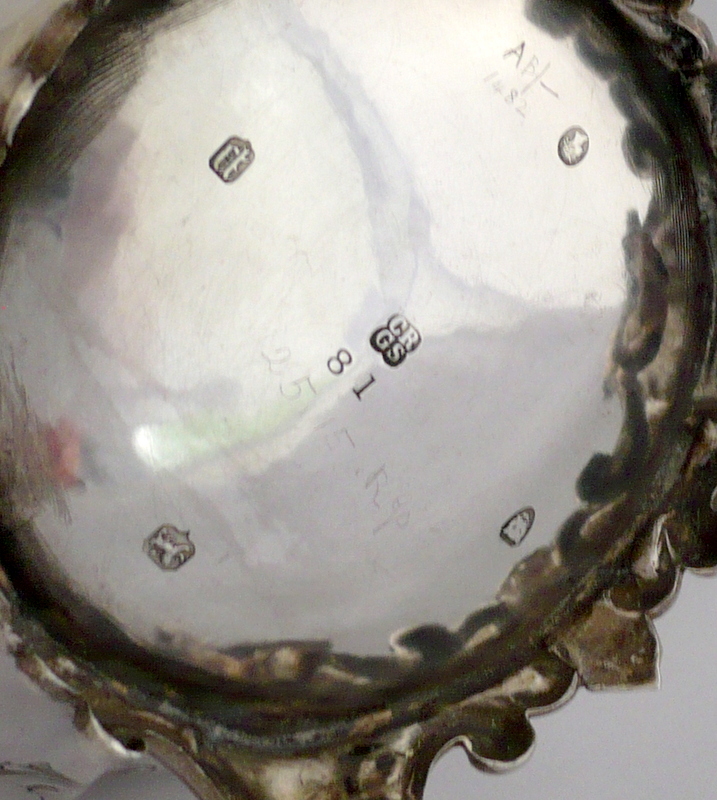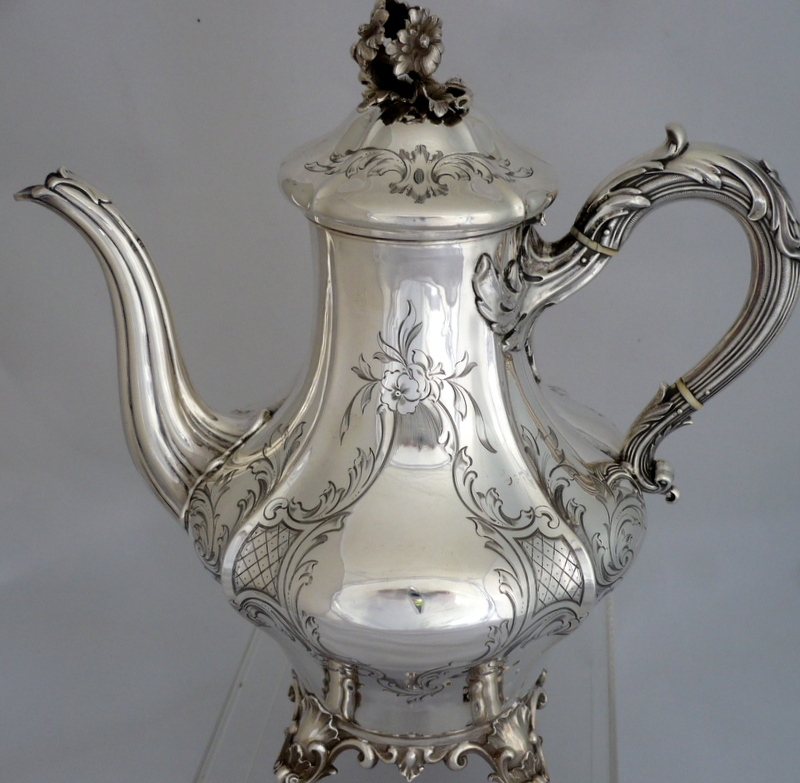The first thing I look for when anyone brings a piece of silver to me are the marks.

The ones here are on the bottom of a coffee pot . These marks tell me a lot about the tea pot . It is sterling silver, made in London by English silversmiths , Charles Reilly and George Storer in 1850
First the letters “CRGS ” These give the names of the silversmiths . The silversmiths registered their marks with the assay office and can be traced.
Next the lion passant set in the shaped rectangle. This tells me that the pot has made the grade for sterling silver – 92.5% silver, the balance copper. Other countries use other symbols and more popularly the numbers 925 but English silver has been marked in this way – with the lion- since the Middle Ages
Next the leopard’s head . This shows that the coffee pot was assayed or checked for content in the London assay office which uses the head of the leopard . There are other assay offices in the UK but they use their own symbols- an anchor for Birmingham , a crown for Sheffield and so on.
Next the lombardic script letter “P” . This tells me that the pot was assayed in 1850. 1849 would have been a letter “O” . 1851 would have been “Q”
The letter changes each year and the style of the script every 25 years . Each assay office uses it’s own date letter system so hallmarks becomes a unique combination of symbols.
The final mark is the monarch’s head in profile. Here we have Victoria . This last mark – known as the “duty” mark indicates that the tax due on the item has been paid – only rich people could afford silver! The duty mark finished in 1890. Items assayed after that date don’t have a duty mark but will have the other symbols.

Browse my collection of English silver and contact me via whats app or schedule an appointment